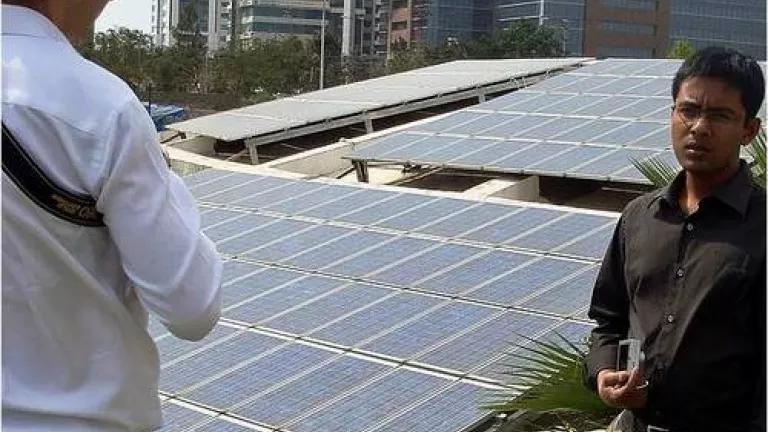Indian Government's Latest Banking Move Propels Low-Cost Financing for Small-Scale Renewable Projects - Part 1 of RE Financing Blog Series

In this two part blog series, we discuss latest developments and financing opportunities for renewable energy in India. Part 1 highlights recent priority sector lending changes and Part 2 focuses on innovative instruments such as green bonds.
Co-authored by Meredith Connolly, Energy Law & Policy Fellow
In an encouraging move, India's central bank - the Reserve Bank of India (RBI) - has added small-scale renewable energy as a priority sector lending category for commercial banks. This new lending category is dedicated for smaller clean energy projects such as rooftop solar installations for homeowners and off-grid installations, which could now receive a much needed infusion of low-cost capital. As energy needs continue to grow around the country, Prime Minister Modi and the Ministry of New & Renewable Energy (MNRE) are aiming to boost India's solar energy capacity by 33 times to 100 GW in seven years. A new National Wind Mission is targeting 60 GW of wind energy by 2022 as well. The scale of financing needed to reach these ambitious goals has not yet materialized, but renewable energy investments are on the rise.
Commercial banks in India are required to give 40 percent of their credit to projects qualifying as "priority sectors"--economic sectors that might not otherwise get timely and adequate credit. Priority sector lending categories were created in recognition of the role banks can play in socioeconomic change. Existing priority sector lending categories include agriculture, education and small- and micro-enterprises. The new RBI guidelines have added the category of small-scale renewable energy along with social infrastructure and medium-sized enterprise categories.
A comprehensive financing strategy that includes priority sector lending for renewable energy projects is key to growing a successful clean energy market in India. NRDC and CEEW have been recommending this move since our first joint report released in 2012, "Laying the Foundation for a Bright Future." Developing a priority sector lending category for small-scale renewable energy is a progressive step that increases the amount of lower-cost funding available for small solar, wind and other clean energy projects.
In January, Prime Minister Modi set a solar investment target of $100 billion to reach the 100 GW of installed solar energy by 2022 goal. Our partners at the Council on Energy, Environment and Water (CEEW) have estimated that India would actually require $160 billion to achieve its solar aspirations. These investment targets and need for an infusion of capital is starting to attract outside financing, focusing on companies from China, Japan, Germany and the U.S.
Clean energy investments have increased 59% in India during the first 3 months of 2015 and are expected to surpass $10 billion before the end of 2015, according to Bloomberg New Energy Finance. Encouraging recent developments include a $1 billion agreement signed with the U.S. Export-Import Bank last fall and this month's new agreement with the French government to expand cooperation on solar energy.
According to the RBI notification issued last week, banks will provide "loans up to a limit of Rs. 15 crore (about $2.35 million) to borrowers for purposes like solar-based power generators, biomass based power generators, wind mills, micro-hydel plants and for non-conventional energy based public utilities viz. street lighting systems, and remote village electrification. For individual households, the loan limit will be Rs 10 lakh per borrower."
Strategic interventions into India's financing ecosystem are opportunities for increasing investments in solar and wind energy. This change to priority sector lending targets is a huge step forward for small-scale renewable energy projects, such as rooftop projects and off-grid solar installments. By increasing the availability of much-needed funding for these projects, the government has taken another step to support the goal of 160 GW of solar and wind by 2022.
(Photo credit: Avinash Kar of NRDC tours rooftop solar panels in the city of Hyderabad. (c) NRDC.)
